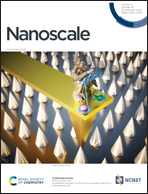In vivo live imaging of bone using shortwave infrared fluorescent quantum dots†
Abstract
Bone plays an increasingly critical role in human health and disease. More noninvasive multi-scale imaging techniques are urgently required for investigations on the substructures and biological functions of bones. Our results firstly revealed that SWIR QDs prepared by us acted as a bone-specific imaging contrast to achieve real-time observation of bone structures both in vivo and ex vivo. The major bone structures of both Balb/C nude mice and Balb/C mice including their skull, spine, pelvis, limbs, and sternum could be rapidly and gradually identified via blood circulation after QD injection in vivo. More importantly, the binding capability of our QDs mainly depended on the biological activities of bone tissues, suggesting that our technique is suitable for in vivo live imaging. In addition, the cell imaging results suggested that the potential mechanism of our bone imaging could be ascribed to the highly specific interaction between QDs and MC3T3-E1 cells. In a word, the skeletal structures and biological activities of bones are anticipated to be observed and monitored with this QD-guided SWIR imaging strategy, respectively. This radiation-free QD-guided SWIR live imaging of bone can add new insights into a comprehensive study of bones in vivo and provide a basis for early diagnosis of bone diseases.

- This article is part of the themed collection: 2020 Nanoscale HOT Article Collection


 Please wait while we load your content...
Please wait while we load your content...